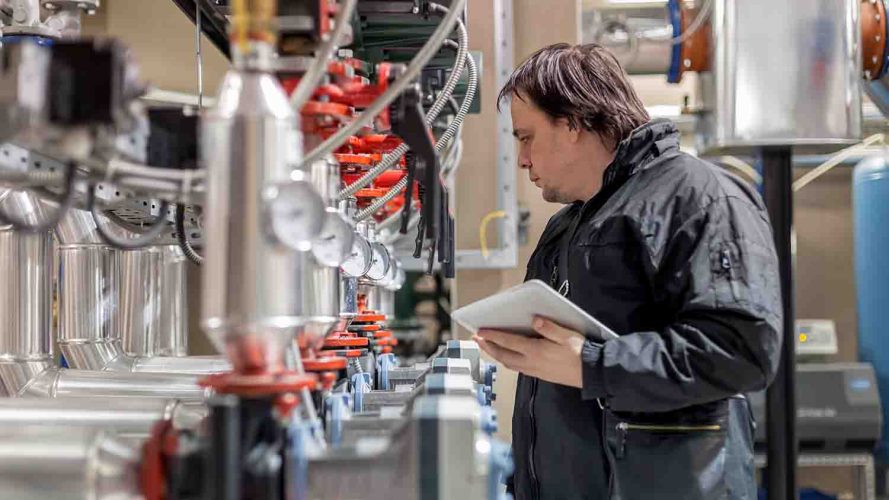4 Award Winners at the Forefront of Field Service Innovation



The most transformative companies are constantly innovating and exploring digital field service solutions. These four winners of the 2021 Salesforce Field Service Awards are at the top of their game.
Field service management has forever changed. As industries worldwide accelerate their digital transformations, they’re prioritizing technologies that can help them quickly adapt to whatever comes their way and deliver exceptional field service.
Digital innovation is the name of the game, as companies scramble to remain relevant amid changing customer expectations. After all, customers have seen the ease, convenience, and possibilities digital has brought to their service experience. And they’re not going back.
Field service leaders have good reason to rise to this challenge: 80% of customer service professionals surveyed said field service is a key part of their overall business strategy and drives significant revenue, according to Salesforce’s latest State of Service report.
We recently honored four customers for their innovative work in field service management, with each garnering a Salesforce 2021 Field Service Award.
Stream this must-watch webinar, featuring Salesforce Field Service Innovation Award winners
Learn how field service teams use digital tools to respond faster to customers, ensure asset uptime, and generate greater revenue.



The Auto Club Group and Auto Club Enterprises — AAA
AAA offers a lesson in how to transform service using digital technologies.
The roadside assistance leader serving 60 million members is overhauling its field service operations to adapt faster to customer expectations and mitigate challenges posed by ride-sharing services and other adjacent markets, said Scott VerBracken, vice president of automotive services for The Auto Club Group — AAA.
“We have to be agile in our ability to deliver capabilities and functionality for our members in a real-time environment,” VerBracken said.
The company recently launched an initiative to provide customers a more convenient way to request emergency roadside assistance and schedule appointments for help at home, which account for 25% of all AAA’s service events. This includes deploying appointment assistance, enabling customers to not only book appointments from their smartphones, but view field service mobile workers’ route progress and estimated time of arrival via a map.
Business rules in the solution help AAA dispatchers prioritize service calls based on severity and assign technicians based on their experience.
“It allows us to assign work to our internal employees based on their skill and level of experience, and it allows us to measure and monitor their productivity in a way that we have not been able to do,” said Nannalee Haywood, vice president of automotive services at AAA — Auto Club Enterprises.
Also, when a station doesn’t have enough drivers the field service solution can automatically reassign that call to another team based on business rules that AAA has configured, Haywood said.
Over time, the field service solution, when complemented with predictive analytics and machine learning software, will help AAA anticipate potential clusters of services events. For instance, heavily attended events, such as a football game or concert, will likely result in more requests for vehicle jumpstarts or lockouts, VerBracken said.
Endress+Hauser
Improving agility enabling new digital customer journeys, and being able to move to more proactive services were the impetus for modernizing field service management at measurement instrument maker Endress+Hauser.
Since the COVID-19 outbreak, customer site visits have been especially challenging for Endress+Hauser. The company’s measurement instrumentation is widely used in food and beverage, pharmaceutical, life science, chemical, and other industries.
To mitigate the pandemic’s impact on employees, Endress+Hauser paired its field service management with augmented-reality software, said Drew Barss, Endress+Hauser’s head of service industrialization. This enabled experienced engineers to to help customers keep their plants operational via remote guidance to engineers and customers on-site.
“When we are able to go on site we can guide a new employee or contractor to ensure that we’re successful the first time,” Barss said. “It allows us to have eyes on site” while maintaining a very high success rate for solving problems.
Leveraging digital data & information has been a key driver. The field service management solution takes cues from Endress+Hauser’s Industrial Internet of Things (IIoT) platform, which generates diagnostic information to alert engineers when machines require service. Additionally, calibration execution data stored in the platform has been paired with advanced analytics to reduce customer maintenance costs via reduced calibration intervals, Barss said.
The solution also helps provide a much more harmonized and consistent approach to service its global customers, better process adoption, and improved communication between sales, planners, and service engineers.
Hologic
Field service management helps Hologic’s sales and service teams tailor experiences for health care providers who use the company’s mammography and clinical laboratory equipment, ultrasound machines, and other medical devices.
More than 700 Hologic engineers pair field service management with IoT technologies to track and manage more than 130,000 assets in the field. Using artificial intelligence, the technology constantly evolves and learns from each data point and interaction across the world, instantly translating data into global knowledge and action.
“By predicting and directing resolution efforts, it results in faster pathways to overall system uptime for customers and the patients they serve,” said Erik Anderson, Hologic’s president of global services.
The technology also helps generate leads, enabling sales teams to recommend new products. Today, 15% of Hologic’s revenue comes from customer service interactions.
Customers use the solution to book, manage, and track appointments for implementation, preventive maintenance, and other on-site services that help them support women’s health, said Hologic Chief Information Officer Paul Malenchini. The platform also enables customers to see exactly what service engineers are billing for while onsite. This ensures contract compliance in real time, Malenchini said.
Anderson said the field service management overhaul is part of a broader, global business transformation path the company has undertaken. This initiative includes capturing data collected from sensors on the company’s devices, part of the growing IoT trend for analyzing machine information to improve operations and customer outcomes.
United Utilities
United Utilities’ replacement of a disparate field service management solution with a single, cloud-based solution has been a game-changer, said Jackie Ives, head of planning and scheduling at United Utilities.
The field service solution provides a holistic view of field service operations. This gives greater visibility into the end-to-end customer journey, improving customer experience and operational performance.
Integrating the company’s website with elements of the new field service solution has made it easier for customers to schedule appointments, report leaks, and communicate, said Colette Evans, United Utilities’ head of customer services.
“It gives us opportunities to do things more quickly by being truly integrated while providing a self-service solution to the customer,” Evans said. “We strive to be innovative, together with enhancing our customers’ experience whilst delivering efficiency.”
The field service solution is one of many enhancements that have improved resolution time for leaks and other issues on its network by over 20%, according to United Utilities.
Real-time visibility into customer appointments is another positive business outcome from the solution for United Utilities. Analytics provide staff the right information with the right context to allow insightful and positive decision-making.
United Utilities has more in store on its field service roadmap as part of a broader digital strategy. The utility is looking at how it could integrate its field service solution further with local authorities. This will help support communication regarding the planning of work and other issues.
“We are looking at integrating all of that into one system so that we have two-way feedback with those stakeholders,” Ives said.
Stream this must-watch webinar, featuring Salesforce Field Service Innovation Award winners
Learn how leading brands embrace digital tools to respond faster to customers and improve business outcomes.




























